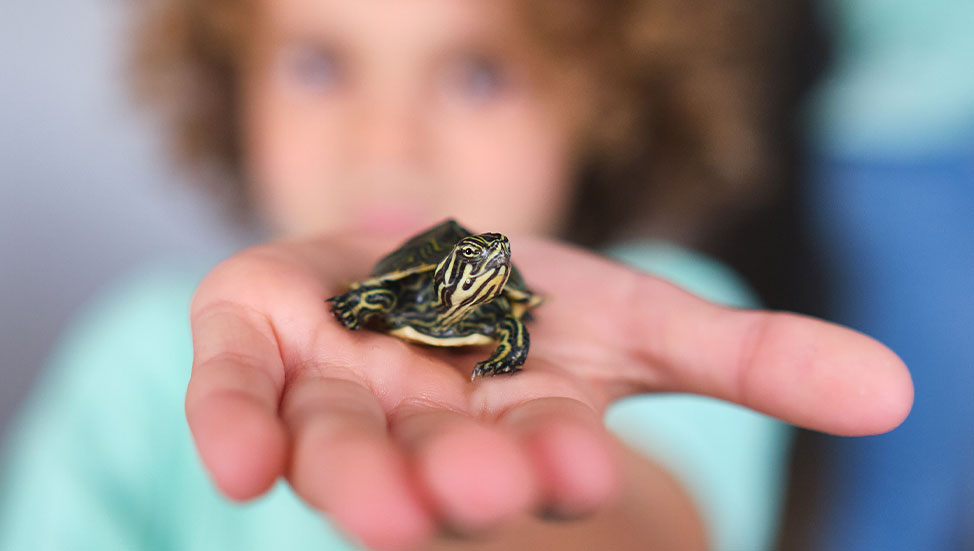Turtles as Pets
I was thinking of getting a pet turtle. What turtle would be best for me?

They’re not exactly the cuddliest pet in town, but turtles can be fun and fascinating pets. As long as you pay attention to their diet and habitat, they are fairly easy to care for. In addition, you may want to leave your turtle in your will as they can live as long as 50 to 60 years, and even longer. Some turtles in the wild are known to live to 100!
Just like other living creatures, turtles come with a variety of personalities: some are shy, some aggressive, and others on the friendlier side. Research turtle personalities to find the one that most appeals to you.
Below we present you with three popular turtle types that are more easily managed as pets and are perfect for beginners. In addition, you’ll find general guidelines for turtle diet, habitat, and care.
Red-Eared Slider
The aquatic Red-Eared Sliders are among the most sociable and friendliest of turtles thus, one of the most popular choices. Their activeness makes them interesting to watch, but as is true with most turtles, they don’t particularly like to be handled and will retreat into their shells when threatened or uncomfortable. They can grow as large as 8 to 10 inches.
Eastern Box Turtle
A plus with Eastern Box Turtles is that they can live quite comfortably outdoors as well as indoors. Ranging in size from 4 to 8 inches, these turtles are on the shy side and definitely don’t like being handled.
Western Painted Turtle
Western Painted Turtles are known for their fascinating and detailed shell design. They are on the shy side and also don’t enjoy much handling. As adults, they can grow to be 10 inches.
Your Turtle’s Diet
Happy, long-living turtles need a rich and varied diet. Store-bought pellets are fine but in limited quantities. Turtles are omnivores, so your turtle needs protein in the form of bugs, fish, and worms. He will also need plenty of leafy greens and aquatic plants. You may be happy to know your turtle only needs to be fed four or five times a week. Calcium is an essential addition to the diet. Be sure to get a calcium supplement and add it to his feed twice each year.
Habitat
It is critical to be sure your turtle’s home is properly set up and maintained. Clean water in the tank is essential. Besides changing the water frequently, you’ll also need a strong filtration system in the tank. It’s a good idea to get thermometers because water and environmental temperatures must be regulated. Each type of turtle requires slight differences in water and ambient temperatures, so be sure to find out what you need for your turtle.
Overall Care
Even with precise care, turtles can become ill with respiratory problems, infections in their shells, broken shells, parasites, and elsewhere in their bodies. Locating a veterinarian in your area is essential because these issues would need veterinary care.
By following these simple guidelines, you will have many years enjoying your pet turtle!
Ready to start saving money on pet wellness care?
Then take a look at Mint Wellness, the pet wellness plan that provides fast reimbursement on routine pet care. Save on vaccinations, wellness exams, preventatives, dental, and more!
Learn More


